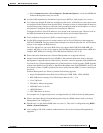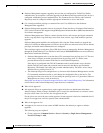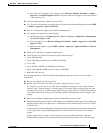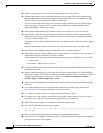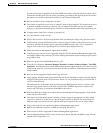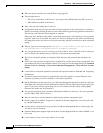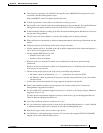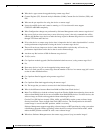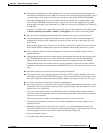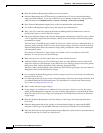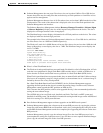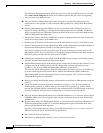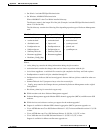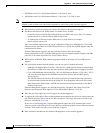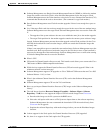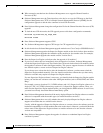
A-47
User Guide for Resource Manager Essentials 4.1
OL-11714-01
Appendix A RME Troubleshooting Tips and FAQs
Software Management
A.
Generally the order defined in selected protocol list will be used for transferring (to upload and
download) Cisco IOS® Soft wares. If RCP is in the top of the selected protocol list then RCP is used
as the first protocol for image transferring on to the devices that support CISCO-FLASH-MIB.
Check the supported protocol list for the device to find out whether device supports RCP or not.
Cisco Catalyst 5500/5000 switches and Cisco 700 series devices do not support rcp. Cisco IOS
devices that do not support rcp include the Cisco 7000 series (route processor [RP]-based 7000 only)
and MC3810.
All other Cisco IOS devices support the rcp protocol. Protocol order defined for the Config option
in Resource Manager Essentials > Admin > Config Mgmt will be used for the Config option.
Q.
How does Software Management ensure that file corruption does not occur during transfer?
A.
Software Management computes the checksum of the image file. Then, Software Management
compares this checksum to the checksum from the device after the copy of the image file to the
device Flash.
Software Management also verifies the size of the file on the Flash. If either the size or checksum
do not match, Software Management aborts the distribution and marks the job status as an error.
Q.
After an upgrade, why does Software Management sometimes leave behind image files in the
tftpboot directory?
A.
Software Management removes the image files from the tftpboot directory after the upgrade unless
the TFTP fallback job option is set. If the TFTP fallback option is set, Software Management
uploads the image from the device and leaves the image in the tftpboot directory for fallback.
Software Management also modifies the boot system commands on the device to add a fallback
command to boot from the original image on the RME TFTP server if the upgraded image does not
boot.
Q.
How much temporary space do you need during image distribution?
A.
The amount of free space necessary depends on the image file size and the number of devices for
simultaneous upgrade. If the TFTP fallback option is set, you need additional free disk space to keep
the current image in the tftpboot directory. Both the tftpboot and temp directories use disk space.
Q.
Is Cisco.com connection mandatory for Software Management?
A.
Cisco.com connection is not mandatory for using basic Software Management functionality. Image
distribution, library management, tracking software upgrade changes, and other functions can run
without Cisco.com connectivity.
Cisco.com connectivity provides the additional benefits of obtaining images and their attributes
from Cisco.com and viewing the status of outstanding bugs against the software images running on
the devices in the network.
The following features of Software Management require Cisco.com connectivity:
• Adding image to Repository from Cisco.com. Software Management can import images for all
supported devices.
• Distributing images directly from Cisco.com to devices, also called Recommend Images from
Cisco.com. Without a Cisco.com connection, the Recommend Images screen Image list box will not
show any images from Cisco.com when it creates the Distribute Images job.
• Cisco.com upgrade analysis.
• Cisco IOS image deferral processing.



